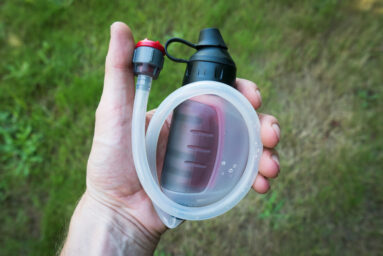Today's Weather
Latest News
Latest news
I guess it’s the run up to Christmas now….but we haven’t even had Halloween, yet alone bonfire night!
Christmas seems to earlier and earlier each year. I bet there are some of you who have already finished their gift shopping! ….just showing off now aren’t you?
I’m still in the process of updating the website with Autumn/Winter products, so please bear with me.
We have a new brand in of tee-shirts, from Baaad Flockers…they’re really cool with great designs…I’ve yet to put them on the website..next job, promise!
Upcoming Events
Hints & Tips
How to buy a Waterproof

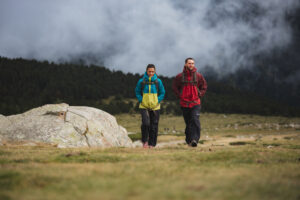 Guide to buying a Waterproof jacket…
Guide to buying a Waterproof jacket…
Thinking of buying a waterproof jacket? Not sure what you’re looking for? Confused by all the tech speak?
Hopefully this will help you make an informed decision when spending your pennies. Let’s be honest, there are so many options and price ranges so it helps to be sure you’re buying the right one.
There are three things to know about waterproofs..Hydro static head, breathability and construction and layers.
Not all waterproofs are equal!
There is a laboratory test which measures how much pressure the fabric can withstand before letting water pass through..imagine a tall, open-ended test tube standing on the fabric and slowly being filled with water, the more water that is added the greater the pressure on the fabric. This is known as the hydrostatic head, the height of water before the fabric started to leak.
When you’re out and about wearing the jacket, this pressure can be likened to rucksack straps, overfilled pocket or kneeling, these actions all increase the external pressure on the jacket and is likely where water will seep through, it not just the case of walking in driving rain!
The higher the number the more waterproof the fabric will be.
To give you an idea of the figures and how they relate to usage:
5,000mm Minimum for a jacket to be called waterproof
10,000mm – 15,000mm This jacket will cope with most downpours, but will eventually soak through if in heavy sustained rain.
20,000mm upwards If you plan to be out all day, in all conditions whilst wearing a pack, this is the jacket for you.
The second thing to be aware of is the breathability of the jacket.
The majority of jackets work by moving moisture at a molecular level and need a difference in humidity and pressure between the inside and the outside of the garment to work. If you happen to be out on a particularly pants day, then expect the jacket to be less efficient at moving sweat.
There are figures which give an indication of just how breathable a garment can be. The greater the figure, the higher the breathability rate.
Breathability Ratings:
5,000 – 10,000g/m²: This level of breathability is fine for urban travel or camping in the rain, but will get clammy for anything strenuous.
10,000 – 15,000g/m²: Jackets in this range are suited to more adventurous travel or low-level walking but anything fast moving, you’ll be back to feeling clammy.
15,000 – 20,000g/m² This level is perfect an all dayer, trekking in warm climates or otherwise working hard and perspiring heavily.
This is where how the jacket is constructed can come into play and we talk about layers.
You’ve probably heard about 2, 2.5 and 3 layers, but what are they? Layers are membranes or fine films which are bonded to the back of the face fabric.
2 layer is a membrane/coating that is without protection. Some products may have a drop liner or mesh to protect the membrane and keep it away from the user for comfort. Essentially keeping the user away from their own sweat on the inside of the jacket. This is not used on technical jackets as a general rule.
2.5 layer will have a print or texture on the membrane/coating to help reduce the amount that the fabric stick to the user, rather than using a liner. This makes the construction light and quite packable, although it will still get visibly wet on the inside from sweat and does tend to be less durable.
3 layer, the membrane is sandwiched between and outer fabric and an inner backer. Protecting the membrane and helping the move moisture away from the user on the inside. Most comfortable against the skin and most durable, but heavier.
All three could have the same Hydrostatic Head (waterproofness) but the breathability rate will vary.
Did you notice that we started to mention weight and packability in that last section? This is where you need to decide when you want to use the jacket, summer or winter, what activity are you doing? Something fast and light, or out all day no matter what the weather.
Balancing weight, waterproof, durability and breathability. When buying a jacket, it’s important to consider the trade-off between weight, waterproof durability, and breathability. If you’re travelling fast and light or only use your waterproof for occasional bursts of rain in warm weather, it can be worth investing in a lighter garment which will often pack down smaller and be more comfortable to wear. However, if you’re in the habit of really abusing your gear then it’s worth investing in a product that has a more durable face fabric that can take repeated punishment. These garments are often less breathable but will be durably waterproof for longer than their lighter weight counterparts.
Whatever you decide, there will probably be a compromise to be made, it’s up to you to decide what is important.
Finally….
Whichever jacket you choose, remember they will need care and a wash to get rid of dirt and grease. All jackets have an external coating called DWR, or Durable Water Repellency. This is not the waterproofing magic, it makes water bead on the surface so rain just rolls off. This in turn helps with the breathability of the jacket. Don’t use normal detergent when washing though, use a specialist soap, like Grangers or Nikwax. The DWR doesn’t need refreshing after every wash though, just washing will be enough.
Come into the shop and Jane will be happy to give you demonstration of how DWR works…or watch this video..
Hope this helps give a better idea of what all the figures and terms mean.
We are always on hand to help if you need it.
Latest Review
MSR Trailshot
Julie Bell and her faithful companion Lottie, from Simply Strolling tested it out whilst she was in Snowdownia for a couple of days last year…
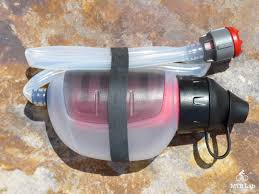
Review of MSR Trail Shot
I was lucky enough to be bought a voucher for Crickhowell Adventure for Christmas which I’d earmarked for an MSR Trail Shot.
This summer it has really come into its own when I’m wild camping. As I have a dog I have to carry extra kit anyway so any weight reduction is a boon. I am usually okay with drinking from high up streams but this summer has been so dry that even the rivers are more like trickles, water temps are rising and I just want the reassurance of knowing that I’m not going to get a dicky tum … or worse….. from being out and drinking from water sources. Add to that the fact you can see larvae etc in some of the smaller streams I don’t see the point in chancing it!
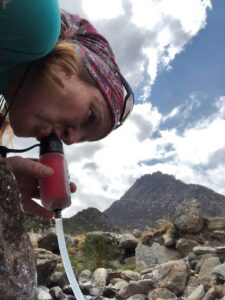
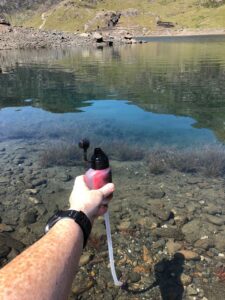
That’s where the MSR Trail Shot comes in. You can either drink straight from the water source through the mouth piece using the hand pump or “pump” the water into whatever you are carrying your water in. I hate the taste of chlorine tablets so this is a happy middle ground for me and as I’ve been caught short with water in the baking temperatures this summer this has been fantastic just to have in my pack. The pic is me coming down after camping in the Carneddau in July. Why did I take it under Tryfan then? Cose it looks cooler than just taking a pic in a place that could be anywhere, and we were about 1.5km away from the car still, in need of a drink and somewhere to cool off our feet, and paws.
Julie and Lottie




